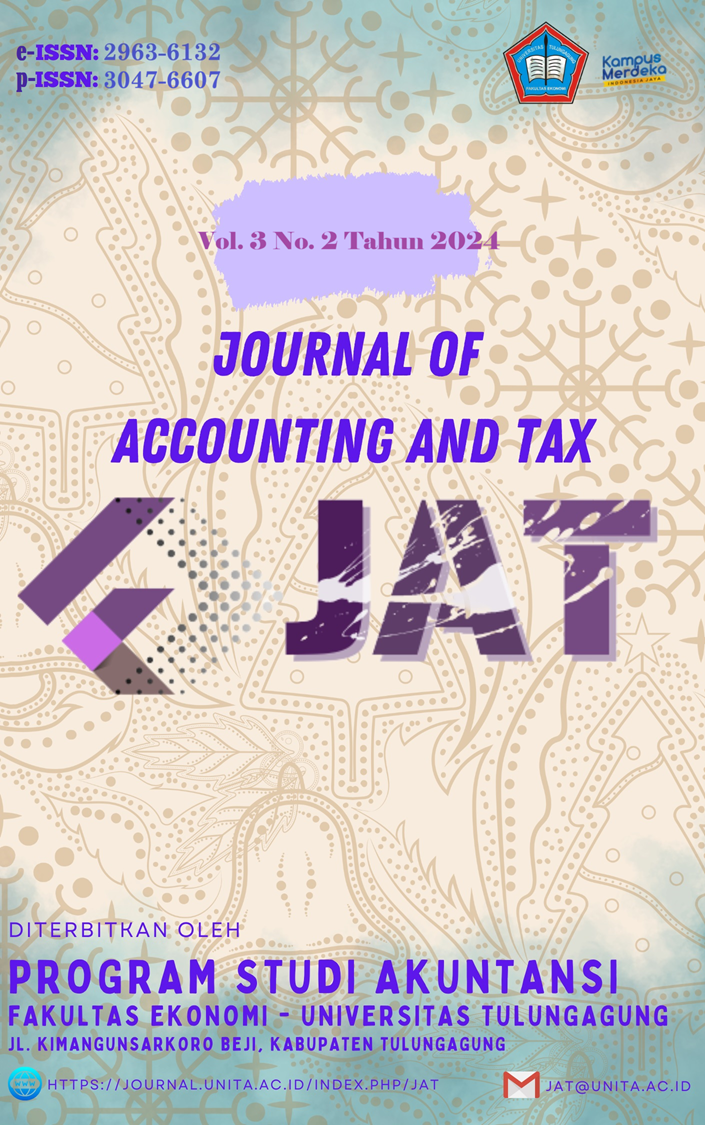HOW FINANCIAL LITERACY AND LIFESTYLE SHAPE IMPULSIVE BUYING HABITS IN E-COMMERCE
DOI:
https://doi.org/10.36563/jat.v3i2.1347Keywords:
Financial Literacy, Lifestyle, Impulsive Buying, E-Commerce, TulungagungAbstract
This study examines the influence of financial literacy and lifestyle on impulsive buying behavior among e-commerce users in Tulungagung, Indonesia. Using an explanatory quantitative approach and survey data from 120 respondents, the analysis was conducted with the Partial Least Squares (PLS) method via SmartPLS software. The findings reveal that while lifestyle significantly and positively impacts impulsive buying behavior, financial literacy does not have a significant independent effect. Together, these variables explain 54.7% of the variance in impulsive buying, suggesting a moderate influence and highlighting the role of other potential factors. The results emphasize that a modest lifestyle observed among the Tulungagung community mitigates impulsive buying tendencies despite active online shopping habits, whereas financial literacy alone may be insufficient to prevent impulsive behavior, particularly among younger consumers. These insights underscore the need for integrated strategies combining financial education and behavioral interventions to promote responsible consumption, offering practical implications for policymakers, educators, and e-commerce platforms.
Downloads
References
Ajzen, I. (1991). The theory of planned behavior. Organizational Behavior and Human Decision Processes, 50(2), 179–211.
Amos, C., Holmes, G. R., & Keneson, W. C. (2014). A meta-analysis of consumer impulse buying. Journal of Retailing and Consumer Services, 21(2), 86–97.
Aulia, T. N., Suryadi, E., & Safitri, H. (2023). Pengaruh Penggunaan E-Wallet dan Literasi Keuangan Terhadap Perilaku Pembelian Impulsif. Owner, 7(3), 2010–2020. https://doi.org/10.33395/owner.v7i3.1601
Chen, Y., & Lee, P. (2018). Impacts of promotional offers on impulsive buying behavior. Journal of Consumer Marketing, 35(3), 236–244.
Chin, W. W. (1998). The partial least squares approach to structural equation modeling. In G. A. Marcoulides (Ed.), Modern methods for business research (pp. 295–336). Mahwah, NJ: Lawrence Erlbaum Associates.
Creswell, J. W., & Creswell, J. D. (2018). Research design: Qualitative, quantitative, and mixed methods approaches (5th ed.). Sage publications.
Dittmar, H., et al. (2007). Consumer behavior, materialism, and impulsive buying. Journal of Economic Psychology, 28(3), 537–558.
Etikan, I., Musa, S. A., & Alkassim, R. S. (2016). Comparison of convenience sampling and purposive sampling. American Journal of Theoretical and Applied Statistics, 5(1), 1–4. https://doi.org/10.11648/j.ajtas.20160501.11
Hair, J. F., Black, W. C., Babin, B. J., & Anderson, R. E. (2019). Multivariate data analysis (8th ed.). Cengage Learning.
Hair, J. F., Hult, G. T. M., Ringle, C. M., & Sarstedt, M. (2017). A primer on partial least squares structural equation modeling (PLS-SEM) (2nd ed.). Sage publications.
Henseler, J., Ringle, C. M., & Sarstedt, M. (2015). A new criterion for assessing discriminant validity in variance-based structural equation modeling. Journal of the Academy of Marketing Science, 43(1), 115–135. https://doi.org/10.1007/s11747-014-0403-8
Huang, E., & Benyoucef, M. (2013). User-centered design for e-commerce. Computers in Human Behavior, 29(4), 1224–1232.
Huang, W., & Korfiatis, N. (2015). E-commerce user behavior and loyalty. Electronic Commerce Research, 15(2), 123–145.
Kotler, P., & Armstrong, G. (2020). Principles of Marketing. Pearson.
Kotler, P., & Keller, K. L. (2016). Marketing Management. Pearson.
Lusardi, A., & Mitchell, O. S. (2014). The economic importance of financial literacy. Journal of Economic Literature, 52(1), 5–44.
Mehrabian, A., & Russell, J. A. (1974). An Approach to Environmental Psychology. MIT Press.
Prelec, D., & Simester, D. (2001). Always leave home without it: A further investigation of the credit-card effect on willingness to pay. Marketing Letters, 12(1), 5–12.
Ringle, C. M., Wende, S., & Becker, J.-M. (2015). SmartPLS 3. Bönningstedt: SmartPLS. Retrieved from http://www.smartpls.com
Rook, D. W. (1987). The buying impulse. Journal of Consumer Research, 14(2), 189–199.
Sheth, J. N., et al. (2011). Sustainability and Consumer Behavior. Pearson.
Smith, A. (2020). Digital transformations in consumer behavior. Journal of Digital Commerce, 5(1), 1–15.
Verplanken, B., & Herabadi, A. (2001). Individual differences in impulse buying tendency. Journal of Consumer Psychology, 12(2), 267–279.
Downloads
Published
Issue
Section
License
Authors who publish with this journal agree to the following terms:
- Copyright on any article is retained by the author(s).
- The author grants the journal, right of first publication with the work simultaneously licensed under a Creative Commons Attribution License that allows others to share the work with an acknowledgment of the work’s authorship and initial publication in this journal.
- Authors are able to enter into separate, additional contractual arrangements for the non-exclusive distribution of the journal’s published version of the work (e.g., post it to an institutional repository or publish it in a book), with an acknowledgment of its initial publication in this journal.
- Authors are permitted and encouraged to post their work online (e.g., in institutional repositories or on their website) prior to and during the submission process, as it can lead to productive exchanges, as well as earlier and greater citation of published work.
- The article and any associated published material is distributed under the Creative Commons Attribution-ShareAlike 4.0 International License
Deprecated: json_decode(): Passing null to parameter #1 ($json) of type string is deprecated in /home/journal.unita.ac.id/public_html/plugins/generic/citations/CitationsPlugin.php on line 68


_.jpg)




